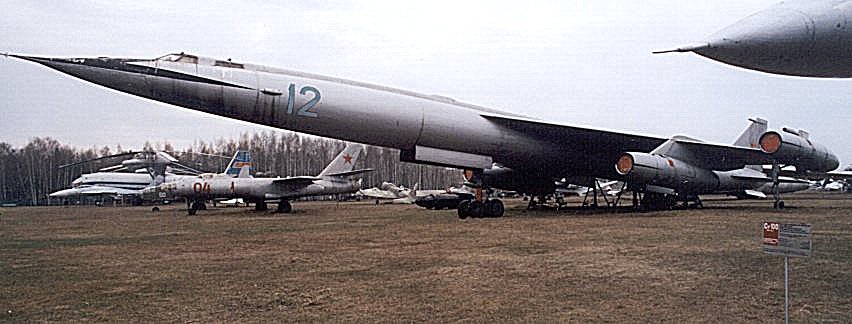✈️ Myasishchev M-50 “Bounder” — Review
🧩 Overview
The Myasishchev M-50 was a Soviet prototype supersonic strategic bomber, designed in the 1950s during a period of intense Cold War weapons innovation. It was intended to fly at supersonic speeds, deliver nuclear weapons, and serve as a direct competitor to American high-speed bombers like the B-58 Hustler and the planned B-70 Valkyrie.
However, it never entered service — only one prototype was ever completed and flown. Despite that, it remains one of the most aesthetically radical and technically ambitious designs to ever emerge from the USSR.
⚙️ Specifications
-
First flight: October 27, 1959
-
Manufacturer: Myasishchev Design Bureau
-
Role: Experimental supersonic strategic bomber
-
Wingspan: 35.1 m (115 ft)
-
Length: 57.5 m (188 ft)
-
Engines: 4 × turbojets (2 underwing, 2 wingtip-mounted)
-
Top speed: Estimated Mach 1.5+ (1,800+ km/h)
-
Range: ~6,000–7,000 km (est.)
-
Ceiling: ~15,000+ meters (49,000+ ft)
🛠 Design Features
-
Delta wing with swept-back planform: Contributed to its high-speed potential.
-
Four-engine layout: Two engines under each wing root, and two more mounted near the wing tips — a rare configuration.
-
Futuristic shape: The narrow fuselage and wide wing sweep gave it a space-age appearance.
-
Tail and stabilizer configuration: Unconventional high-mounted horizontal tail.
📜 History & Purpose
The M-50 was part of the Soviet push to develop long-range bombers that could outrun and outfly U.S. defenses. However, the emergence of intercontinental ballistic missiles (ICBMs) quickly shifted strategic thinking.
Only one prototype flew — and only a few times. The project was canceled as ICBMs became the dominant nuclear delivery method, and the bomber’s performance didn’t live up to its ambitious design goals.
📷 Public Display
In a classic Cold War move, the USSR displayed the M-50 at the 1961 Tushino Air Show, leading to major speculation in the West. NATO gave it the codename “Bounder”, and many believed it was already in operational service (it wasn’t).
🧱 Strengths
-
Radically innovative design for its time
-
Supersonic capabilities
-
Demonstrated Soviet engineering boldness
⚠️ Weaknesses
-
Poor range for a strategic bomber
-
Never fully achieved supersonic performance in testing
-
Extremely complex and maintenance-heavy
-
Obsolete before it flew, due to ICBM developments
🏁 Final Verdict:
| Category | Rating (★ out of 5) |
|---|---|
| Innovation | ★★★★★ |
| Performance | ★★☆☆☆ |
| Reliability | ★☆☆☆☆ |
| Strategic Value | ★★☆☆☆ |
| Cool Factor | ★★★★★ |
| Legacy | ★★★☆☆ |

Comments are closed